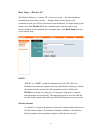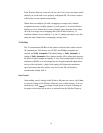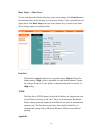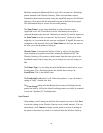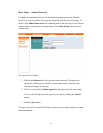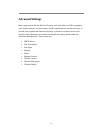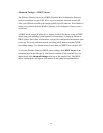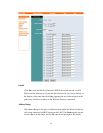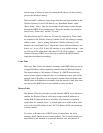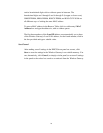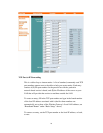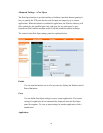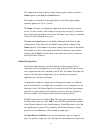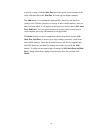25
that the range of addresses must not contain the IP address you have already
given to the Wireless Gateway.
The From and To addresses always begin with the same three numbers as the
Wireless Gateway's Local LAN address (see “Broadband Router” under
“Basic Setup,” above). Only the last number of each address can be changed
through the DHCP Server settings panel. These two numbers are referred to
below as the “From value” and the “To value.”
The default From and To values are 101 and 150, respectively. These values
are suitable for the Wireless Gateway's default Local LAN settings or settings
similar to them — that is, settings that put the Wireless Gateway's LAN
interface on an undivided Class C IP network, where valid host addresses run
from x.x.x.1 to x.x.x.254. If the LAN interface is on a smaller network — that
is, if a Local LAN subnet mask other than 255.255.255.0 is chosen — and the
Wireless Gateway's DHCP server function is enabled, the DHCP address
range must be adjusted accordingly.
Lease Time
The Lease Time value is the number of minutes each DHCP client can use its
assigned IP address without requesting renewal from the Wireless Gateway.
The default setting is 1440 minutes (24 hours). If a DHCP client does not
request a lease renewal within this time, it is considered to have gone off the
network, and its IP address can be assigned to another client. Note that some
DHCP clients will themselves disconnect from the network if their lease time
runs out and the DHCP server is not available to renew the lease.
Reserve Table
The Reserve Table lets you make sure that when the DHCP server function is
enabled, the Wireless Gateway will always assign certain IP addresses to
certain DHCP clients and never to any others. This function is especially
useful when, for example, there’s a network print server which will be easier
to use with a fixed IP address in the LAN. The Reserve Table can contain up
to sixteen entries.
To reserve an IP address for a DHCP client, you must know the client
machine's MAC (Media Access Control) address. This is usually printed on a
label affixed to the machine or its network interface card, and consists of



